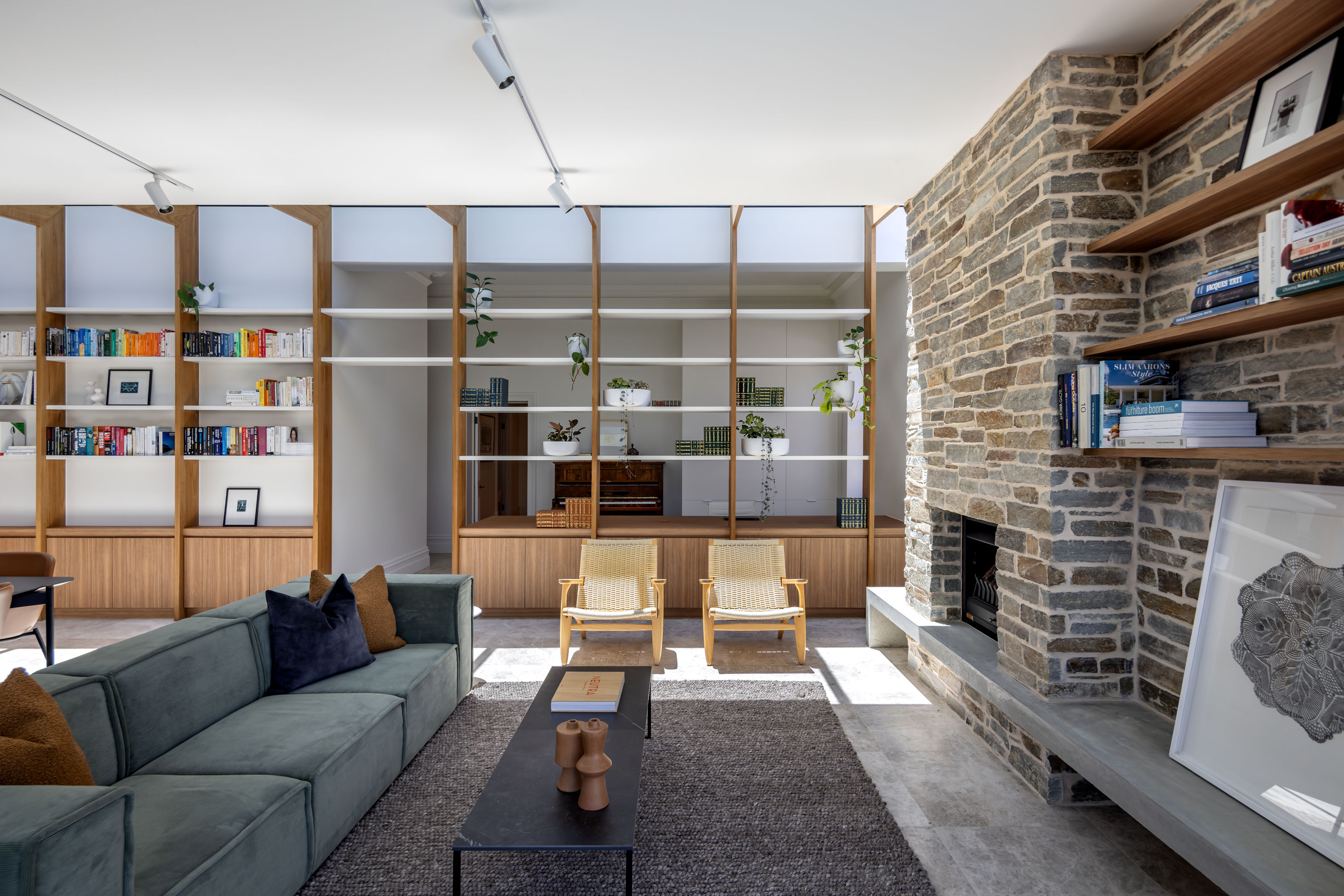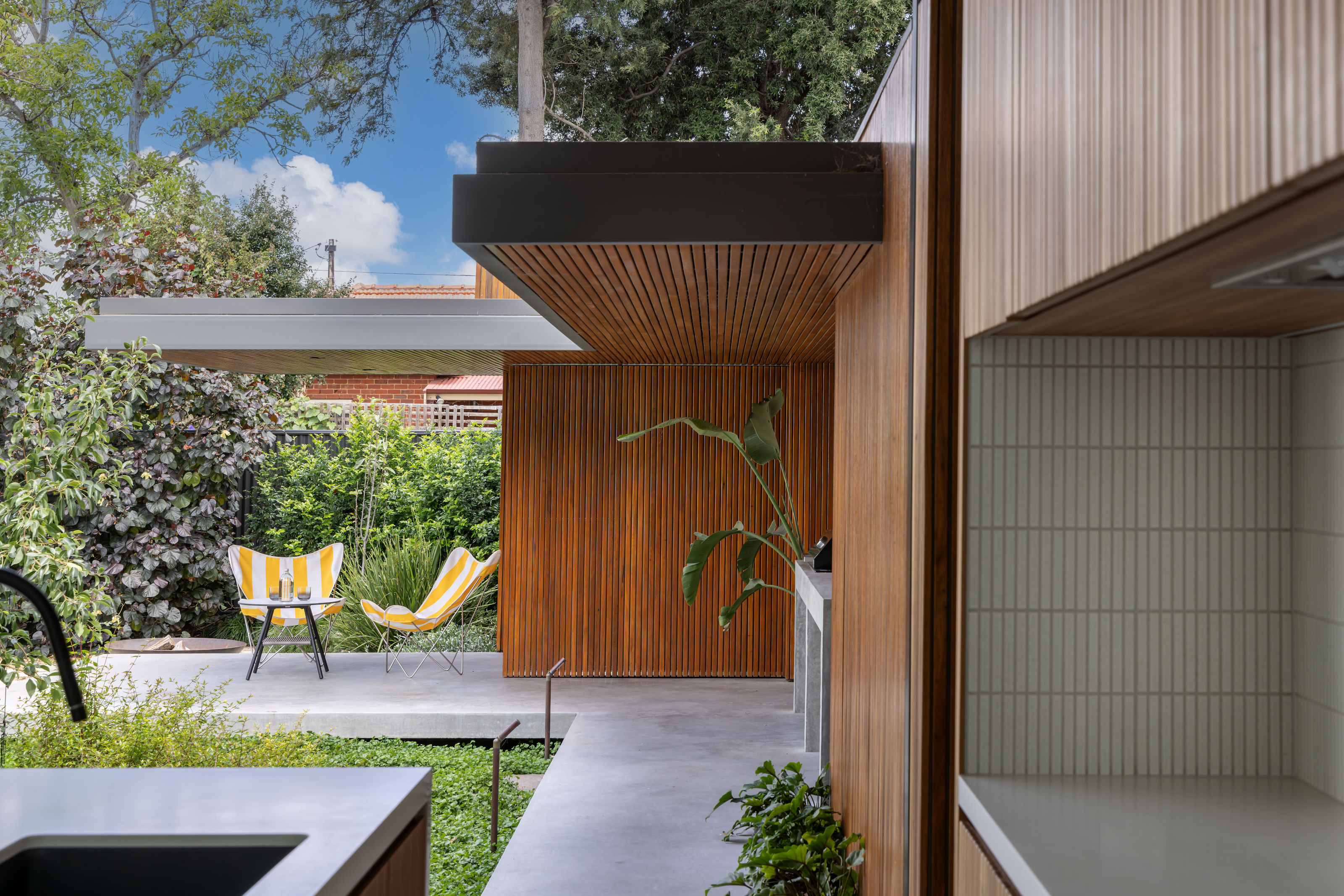
When Glasshouse Projects set out to renovate a Victorian cottage from 1890 in Prospect, a suburb of Adelaide, the brief seemed especially ambitious. Despite the site measuring just over 600 sq m, the clients wanted to be able to expand the house so that it could accommodate not just large gatherings, but also discrete areas for studying, working, and playing music, as well as a pool and dedicated service area.
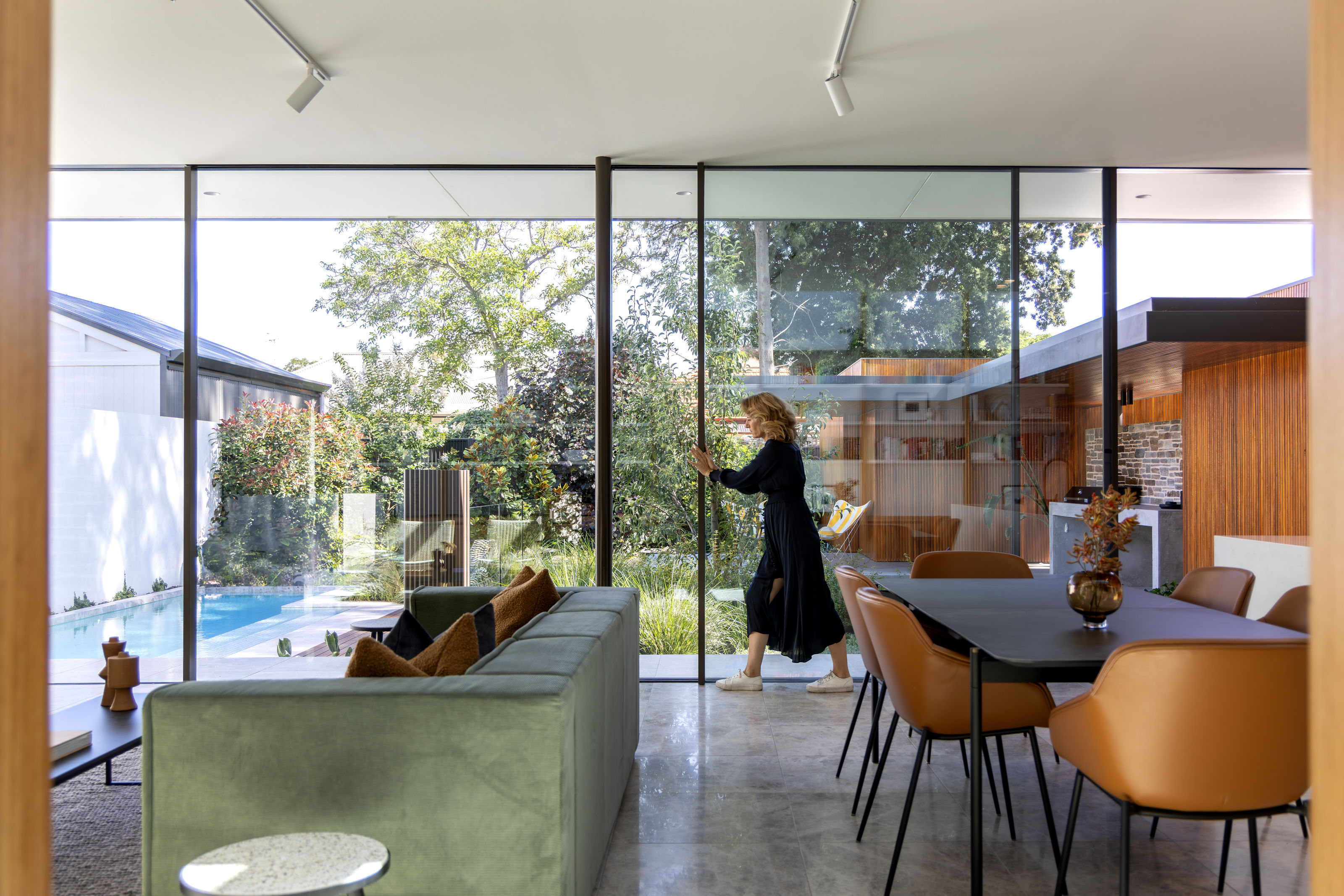
A contemporary Victorian cottage transformation
The finished extension spreads over 305 sq m, with the design studio making the most of the perceived space by raising the living areas up above the garden and pool, encircling a sunken garden area with a covered concrete walkway that doubles up as an external entertaining space.

A floating box contains the kitchen, dining and living spaces, and is characterised by two walls of glazing, with a 3m section that can slide open to the garden. One corner overhangs the long swimming pool, giving off a whiff of Case Study House. Open joinery shelving subdivides the new spaces without carving up the volumes, while an 8.5m-long skylight has been installed across the full length of the living areas, marking the separation of old and new.
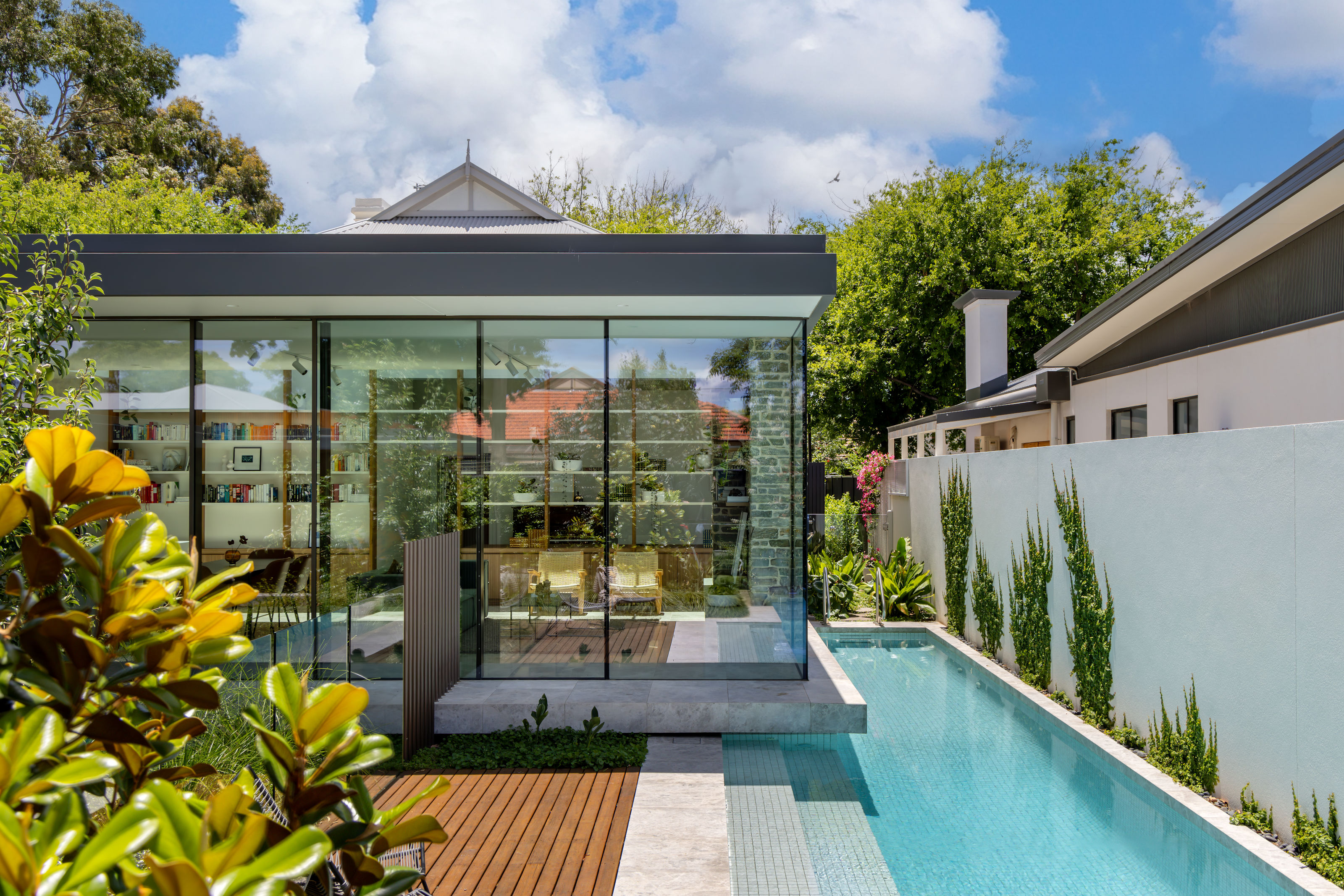
At the front of the house, the original Victorian façade and veranda, with checkerboard tiled flooring and stained-glass insets in the front door, have been retained and restored. This veranda is mirrored by the new covered walkway at the rear, and even though the material palette is pared back to wood, concrete and steel, there’s careful attention to detail in every alignment.
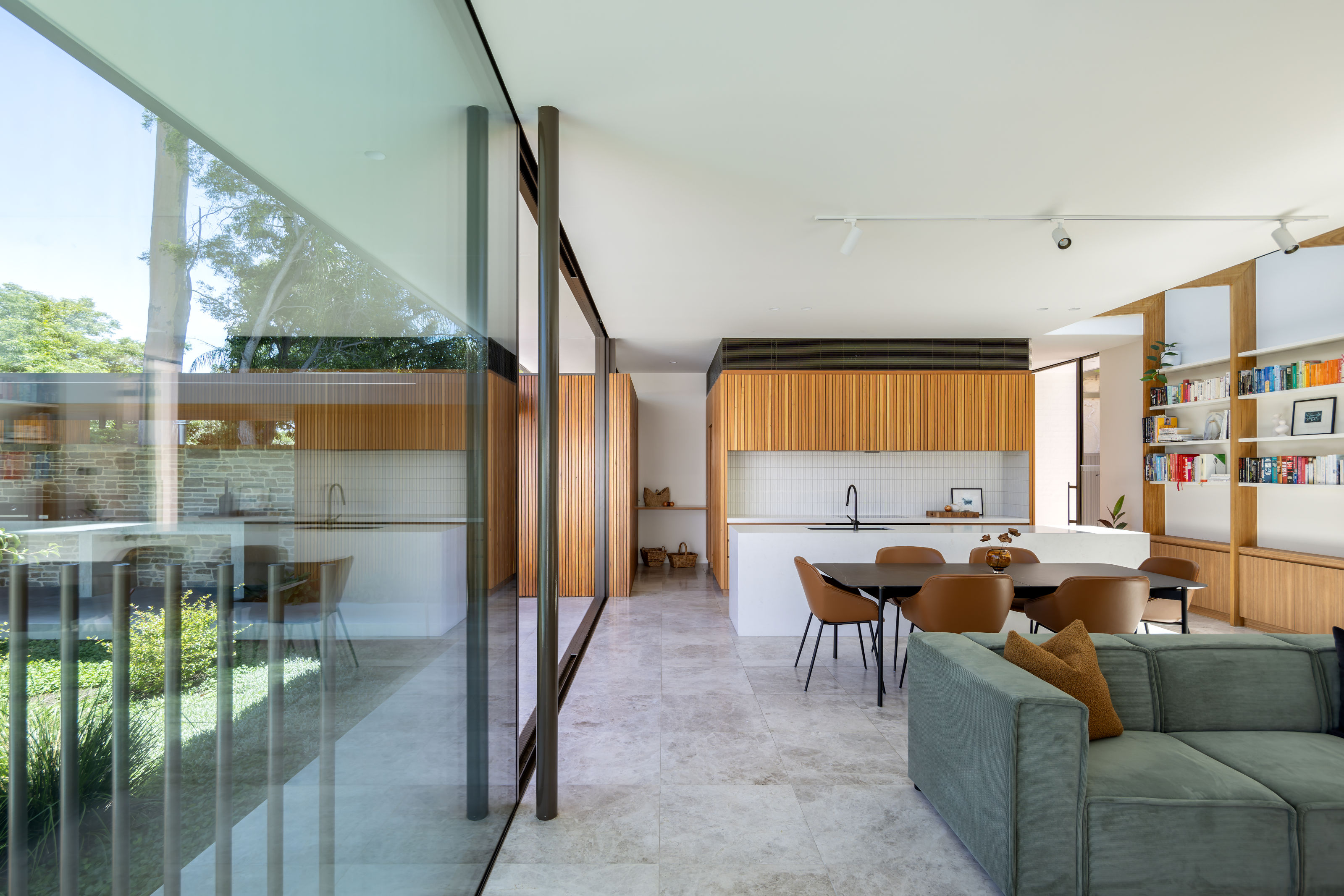
As well as the new kitchen, dining area and pool, the project also added a butler's pantry, a laundry, a powder room, a guest bathroom, a study, and a new principal bedroom with ensuite. The last has its own private access to the pool, tucked away down the side of the house. A new rear entrance and parking space allow direct access to the kitchen from the car.
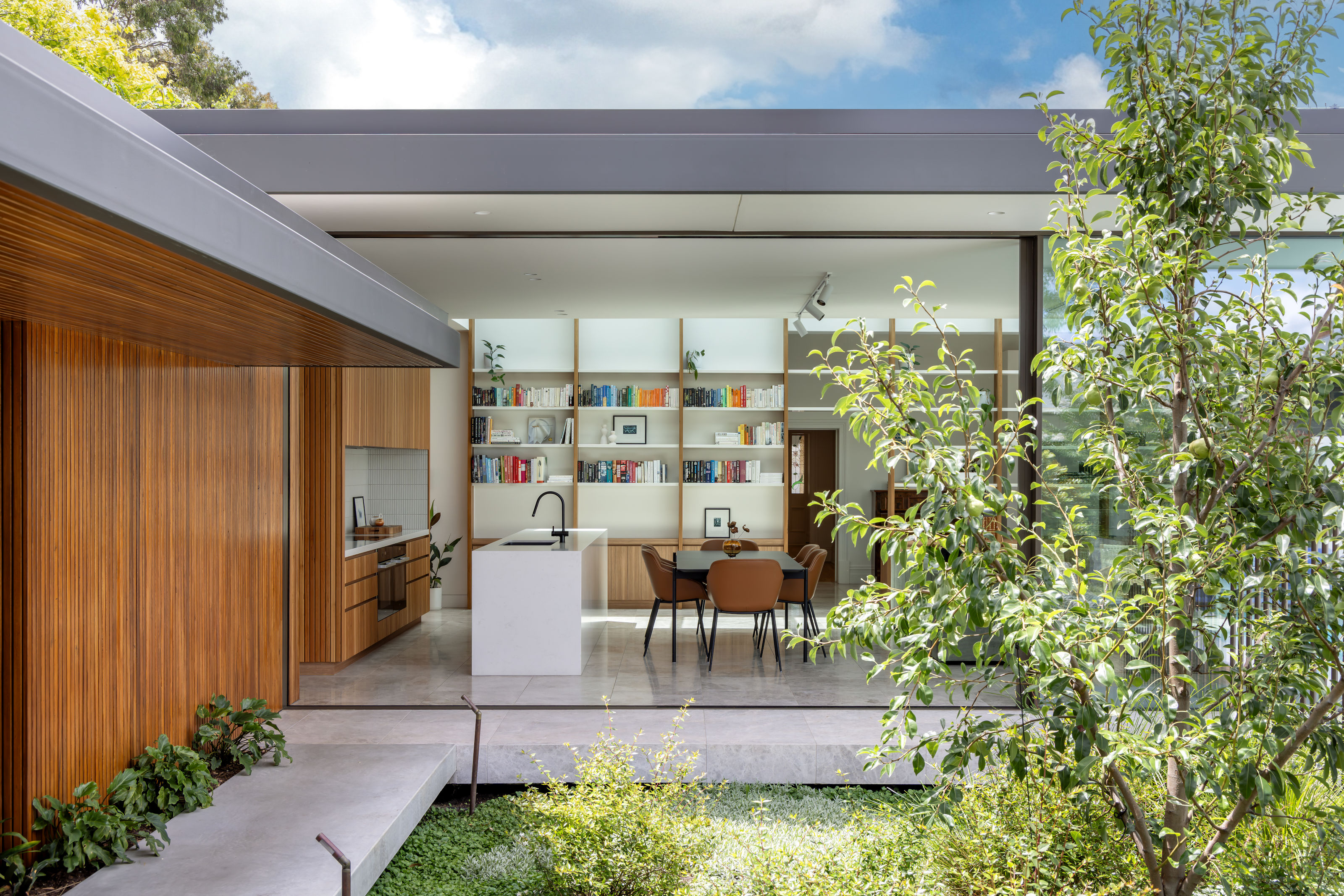
The timber panelling in the kitchen cupboards is carried through into the garden walkway and sliding panels that conceal the garage, while materials, such as the textured limestone and Japanese ceramic tile splashback, give the addition a rich materiality that tones with the carefully planted garden. The eponymous pear tree has pride of place in the new garden scheme.
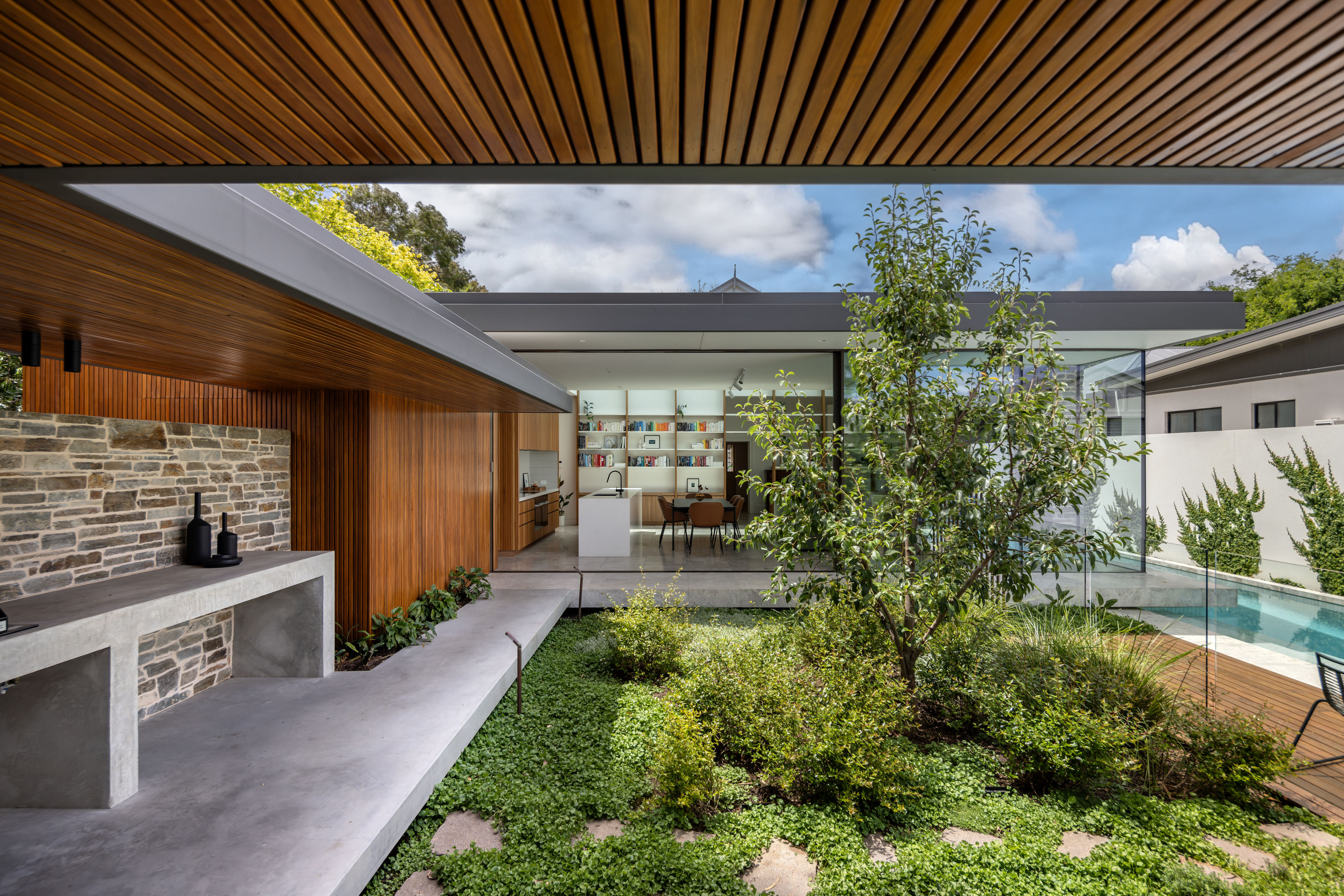
‘Pear Tree house was a small footprint, so every last bit of space needed to perform,’ says the lead architect, Don Iannicelli. ‘We added texture by the use of wood, stone and concrete and pairing this with ample glass, we were able to create a radiant openness and richness which was a real contrast to its starting point.’
